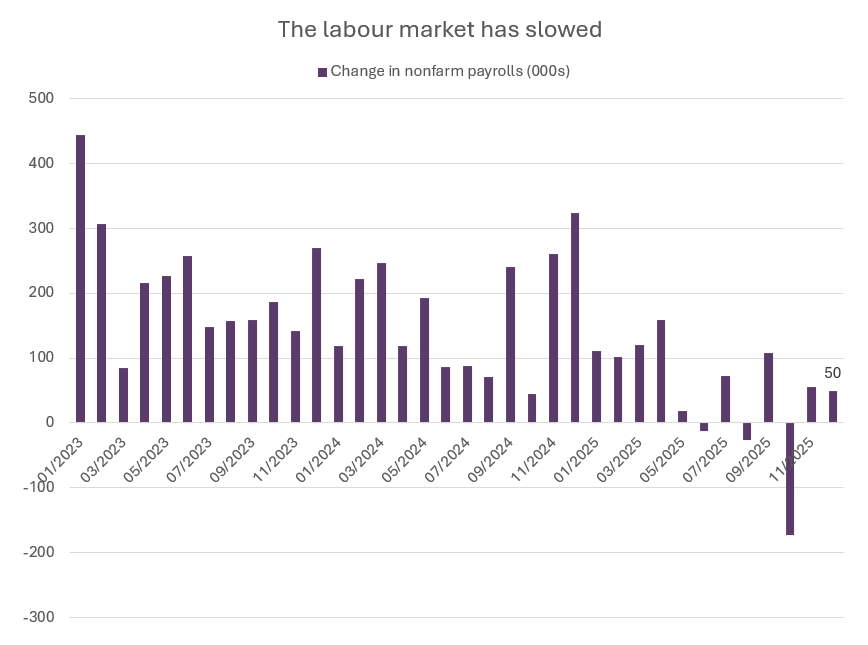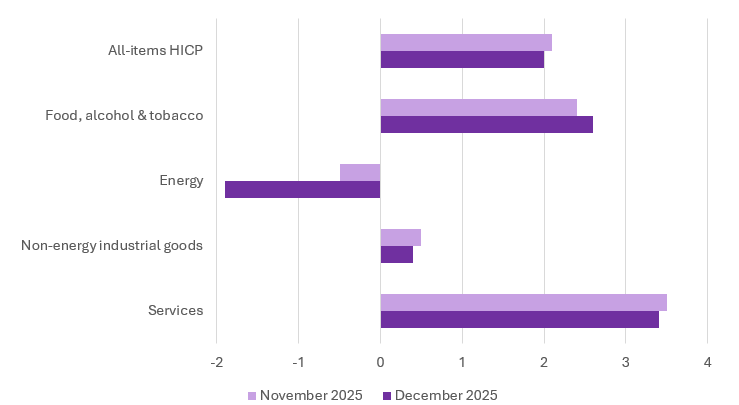Safe haven assets, including gold, rose at the start of the week in response to the US intervention in Venezuela which sparked questions about the future of the world’s largest oil reserves. The Venezuelan oil industry produces less than 1% of global oil output despite its large reserves, constrained by ailing infrastructure and US sanctions.
According to the EIA, Venezuela accounts for roughly 17% of all proven crude reserves. Around two decades ago, it produced over 3 million barrels per day. Today, it only pumps around 800,000. The full restoration of its production will take years, and dilapidating facilities will need billions of US dollars of investment.
After fluctuating over the week, Brent crude rose above $63 per barrel on Friday on concerns about potential disruption to Iran's output (amid protests), uncertainty about supply from Venezuela (Trump was scheduled to meet oil companies on Friday 9 January to discuss) and amid further escalation in the Russia-Ukraine war, with Russia firing a hypersonic missile at targets in Ukraine.
Overall, an oversupplied market still appears to be the likely scenario for 2026, unless we see risks around Iran escalate.
Also in the Middle East, Saudi Arabia announced that it plans to open its financial markets to all foreign investors from February 1st. The market regulator stated that it will ease rules in order to attract foreign investments, improving market liquidity.
Market Snapshot

Source: Bloomberg, BIL as of 15:50, January 9
Macro Snapshot
Mixed signals from the US labour market
The US economy added 50 000 jobs in December, following a downwardly revised 56 000 in November and below expectations of a 70 000 rise, pointing to further cooling in the labour market. Employment trended upwards for food services and drinking places, health care and social assistance. Jobs in retail trade fell.

Source: Bloomberg, BIL
In 2025 as a whole, payroll employment rose by 584 000, compared to the 2 million increase in 2024.
Despite weak job creation, the unemployment rate unexpectedly fell to 4.4% in December, from 4.5% the month prior. No major uptick in the unemployment rate will probably give the Federal Reserve enough confidence to pause monetary easing at its next policy meeting. After cutting rates by 25 basis points in December, Fed Chair Jerome Powell said that borrowing costs were now “well positioned” and that the bar for future cuts would be higher.
In addition to falling unemployment, data from Challenger, Gray and Christmas this week showed that job cuts are also easing. US employers announced 35 553 job cuts in December, the lowest since July 2024. With 2025 having seen a 58% rise in job cuts compared to 2024 (with DOGE layoffs and the government shutdown playing a significant role), the year ended with the fewest announced layoff plans all year. However, on the hiring side, employers announced 507 647 planned hires, which is the lowest level since 2010.
With some mixed signals coming from the US labour market, but unemployment nevertheless easing, the Fed is likely to pause monetary easing at the start of the year, before continuing to cut rates further as the year progresses.
After 25 years of talks, EU countries approve Mercosur trade deal
EU member states provisionally voted to back the Mercosur trade deal this Friday - a deal that is over two decades in the making. The free-trade agreement between the EU and South America’s Mercosur bloc, made up of Brazil, Argentina, Uruguay and Paraguay, was concluded in December 2024 but has since awaited official approval by EU member states. This agreement would create the world’s largest free-trade zone, allowing the EU to export more vehicles, machinery, wines and spirits to Latin America, while the latter would be able to export more beef, sugar, rice, honey and soybeans to Europe. The deal has, however, faced criticism from European farmers, particularly in France, as there is concern that the European market will be flooded by cheaper alternatives from South America. Earlier this week, European Commission President Ursula von der Leyen announced that EU farmers would have early access to €45 billion from 2028 under the next Common Agricultural Policy budget if the Mercosur trade agreement is signed.
Eurozone inflation and unemployment rates fell at the end of 2025
Consumer prices in the Eurozone eased to 2% in December, from 2.1% in November, according to flash estimates. This marks the lowest inflation rate since August, back at the European Central Bank’s target.
The price growth of services and non-energy industrial goods slowed, while energy prices fell more sharply. Meanwhile, prices for food, alcohol and tobacco rose slightly. Services inflation is a closely watched indicator of price pressures, and while it remains well above the ECB’s target, the easing in December is a positive sign.
Core inflation, which excludes volatile categories such as food and energy, fell to 2.3% year on year, the lowest in four months.

Source: Eurostat, BIL
The ECB expects inflation to average 1.9% this year, down from 2.1% in 2025.
In December, the ECB held its benchmark interest rate steady at 2% for the fourth consecutive meeting. With the inflation rate back at the ECB’s 2% target, investors have further cemented expectations that the ECB will keep rates on hold throughout 2026.
In addition to stable inflation, the Eurozone labour market remains robust, with the unemployment rate dropping unexpectedly to its lowest level since April.
The jobless rate in the Eurozone has remained close to record lows throughout 2025, falling to 6.3% in November from 6.4% between May and October. Youth unemployment, reflecting the proportion of people under 25 who are looking for work, also eased to 14.6% in November, down from 14.8% in October. Among the bloc's largest economies, Germany recorded the lowest unemployment rate of 3.8%, while Spain recorded the highest rate of 10.4%.

Source: Bloomberg, BIL
China’s consumer prices increased by the most since February 2023 in December
China’s annual inflation rate increased to 0.8% in December, up from 0.7% the previous month and the highest level since February 2023. Food prices increased the most in 14 months, driven by sharper price rises for fresh vegetables and fruit. Pre-New Year holiday shopping also helped to boost consumer prices. Core inflation, which excludes volatile categories such as food and energy, remained at a 20-month high of 1.2%.
However, deflationary risks are far from being banished in China, with full-year consumer price growth flat in 2025 - the lowest in 16 years - and persistent producer deflation. This is well below the 2% target set by policymakers, indicating that the policy support aimed at boosting consumption in 2025 has only yielded moderate results. The ongoing property crisis continues to dampen household confidence. Combined with overcapacity and price competition, this creates a challenging outlook for inflation this year. It also puts renewed pressure on policymakers to announce new stimulus measures to significantly boost consumer demand.
Calendar for the week ahead
Monday – Germany Current Account (November).
Tuesday – US NFIB Business Optimism Index (December), Inflation Rate (December).
Wednesday – China Balance of Trade (December), New Yuan Loans (December). US PPI (November).
Thursday – UK GDP Growth Rate (November), Industrial Production (November), Balance of Trade (November). Germany Full Year GDP Growth (2025). Eurozone Balance of Trade (November), Industrial Production (November). US Jobless Claims, Retail Sales (December).
Friday – US Industrial Production (December).
Disclaimer
All financial data and/or economic information released by this Publication (the “Publication”); (the “Data” or the “Financial data
and/or economic information”), are provided for information purposes only,
without warranty of any kind, including without limitation the warranties of merchantability, fitness for a particular
purpose or warranties and non-infringement of any patent, intellectual property or proprietary rights of any party, and
are not intended for trading purposes. Banque Internationale à Luxembourg SA (the “Bank”) does not guarantee expressly or
impliedly, the sequence, accuracy, adequacy, legality, completeness, reliability, usefulness or timeless of any Data.
All Financial data and/or economic information provided may be delayed or may contain errors or be incomplete.
This disclaimer applies to both isolated and aggregate uses of the Data. All Data is provided on an “as is” basis. None of
the Financial data and/or economic information contained on this Publication constitutes a solicitation, offer, opinion, or
recommendation, a guarantee of results, nor a solicitation by the Bank of an offer to buy or sell any security, products and
services mentioned into it or to make investments. Moreover, none of the Financial data and/or economic information contained on
this Publication provides legal, tax accounting, financial or investment advice or services regarding the profitability or
suitability of any security or investment. This Publication has not been prepared with the aim to take an investor’s particular investment objectives,
financial position or needs into account. It is up to the investor himself to consider whether the Data contained herein this
Publication is appropriate to his needs, financial position and objectives or to seek professional independent advice before making
an investment decision based upon the Data. No investment decision whatsoever may result from solely reading this document. In order
to read and understand the Financial data and/or economic information included in this document, you will need to have knowledge and
experience of financial markets. If this is not the case, please contact your relationship manager. This Publication is prepared by
the Bank and is based on data available to the public and upon information from sources believed to be reliable and accurate, taken from
stock exchanges and third parties. The Bank, including its parent,- subsidiary or affiliate entities, agents, directors, officers,
employees, representatives or suppliers, shall not, directly or indirectly, be liable, in any way, for any: inaccuracies or errors
in or omissions from the Financial data and/or economic information, including but not limited to financial data regardless of the
cause of such or for any investment decision made, action taken, or action not taken of whatever nature in reliance upon any Data
provided herein, nor for any loss or damage, direct or indirect, special or consequential, arising from any use of this Publication
or of its content. This Publication is only valid at the moment of its editing, unless otherwise specified. All Financial data and/or
economic information contained herein can also quickly become out-of- date. All Data is subject to change without notice and may not be
incorporated in any new version of this Publication. The Bank has no obligation to update this Publication upon the availability of new data,
the occurrence of new events and/or other evolutions. Before making an investment decision, the investor must read carefully the terms and
conditions of the documentation relating to the specific products or services. Past performance is no guarantee of future performance.
Products or services described in this Publication may not be available in all countries and may be subject to restrictions in some persons
or in some countries. No part of this Publication may be reproduced, distributed, modified, linked to or used for any public or commercial
purpose without the prior written consent of the Bank. In any case, all Financial data and/or economic information provided on this Publication
are not intended for use by, or distribution to, any person or entity in any jurisdiction or country where such use or distribution would be
contrary to law and/or regulation. If you have obtained this Publication from a source other than the Bank website, be aware that electronic
documentation can be altered subsequent to original distribution.
As economic conditions are subject to change, the information and opinions presented in this outlook are current only as of the date
indicated in the matrix or the publication date. This publication is based on data available to the public and upon information that is
considered as reliable. Even if particular attention has been paid to its content, no guarantee, warranty or representation is given to the
accuracy or completeness thereof. Banque Internationale à Luxembourg cannot be held liable or responsible with respect to the information
expressed herein. This document has been prepared only for information purposes and does not constitute an offer or invitation to make investments.
It is up to investors themselves to consider whether the information contained herein is appropriate to their needs and objectives or to seek advice
before making an investment decision based upon this information. Banque Internationale à Luxembourg accepts no liability whatsoever for any investment
decisions of whatever nature by the user of this publication, which are in any way based on this publication, nor for any loss or damage arising
from any use of this publication or its content. This publication, prepared by Banque Internationale à Luxembourg (BIL), may not be copied or
duplicated in any form whatsoever or redistributed without the prior written consent of BIL 69, route d’Esch ı L-2953 Luxembourg ı
RCS Luxembourg B-6307 ı Tel. +352 4590 6699 ı www.bil.com.
Read more
